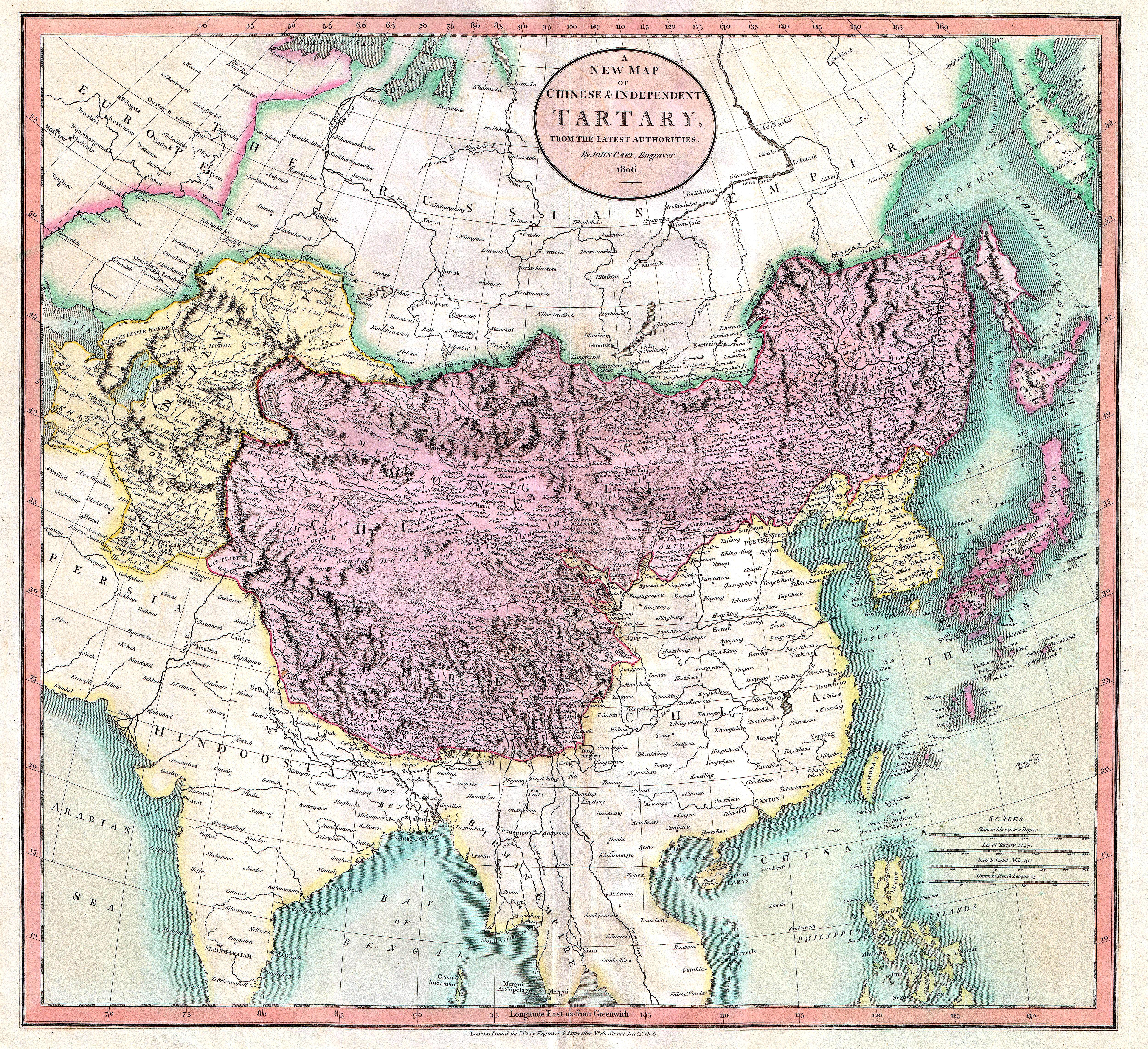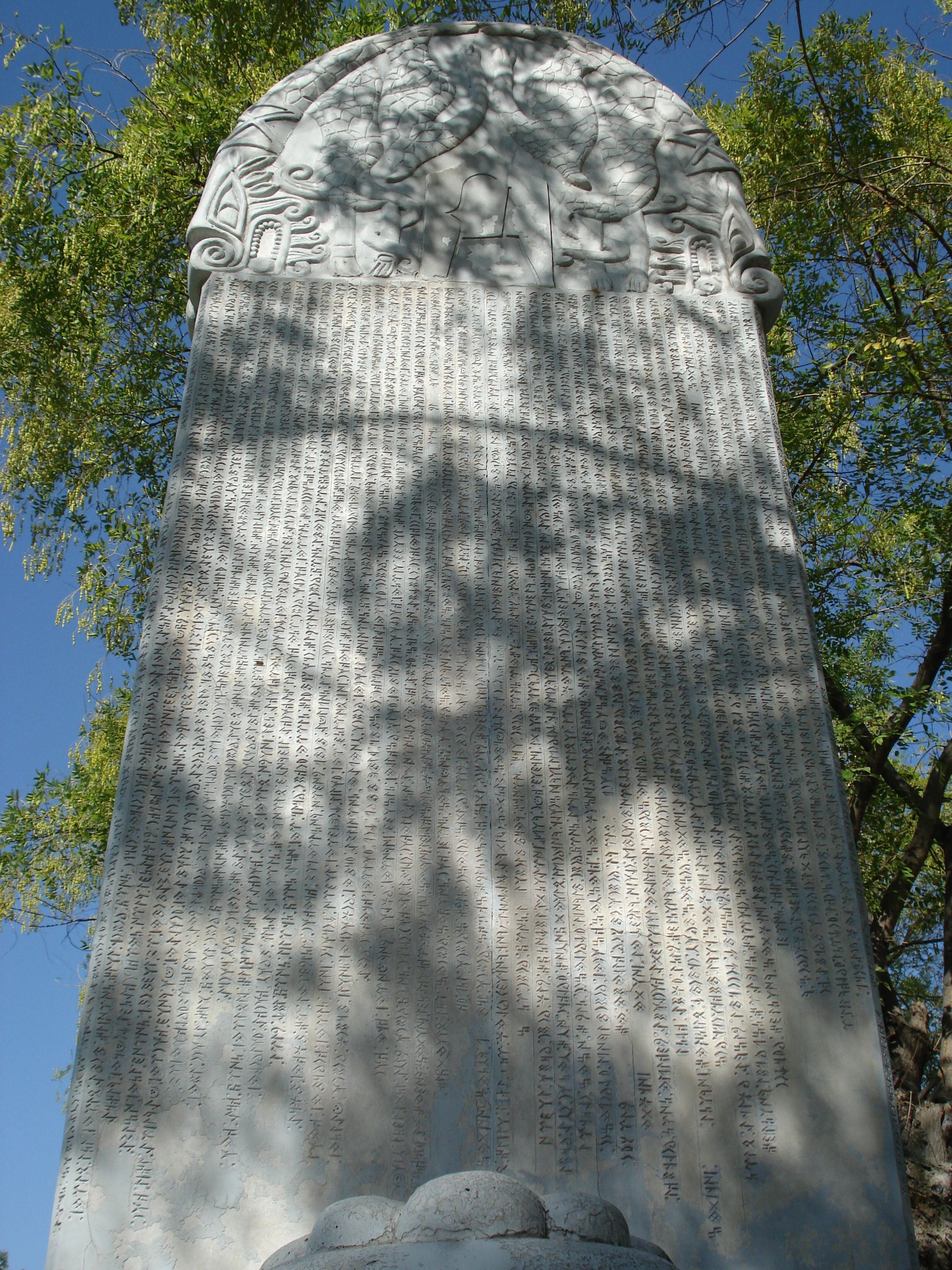|
Tartar
Tartar may refer to: Places * Tartar (river), a river in Azerbaijan * Tartar, Switzerland, a village in the Grisons * Tərtər, capital of Tartar District, Azerbaijan * Tartar District, Azerbaijan * Tartar Island, South Shetland Islands, Antarctica People and languages * Tartar, someone from Tartary, the historical central Asian region populated by Manchus, Mongols, Turks, and others * Tatars, a Turkic ethnic group native to present-day Russia and Ukraine ** Tatar language Chemicals * Potassium bitartrate, also called cream of tartar * Tartaric acid, commonly mixed with sodium bicarbonate and sold as baking powder Food * Steak tartare, a meat dish made from raw ground (minced) beef or horsemeat * Tartar sauce, a condiment primarily composed of mayonnaise and finely chopped capers * Cream of Tartar, the culinary name for potassium bitartrate, a dry, powdery, acidic byproduct of fermenting grapes into wine Military * ''Tartar'' (1813 privateer), an American private ... [...More Info...] [...Related Items...] OR: [Wikipedia] [Google] [Baidu] |
Tartarus
In Greek mythology, Tartarus (; grc, , }) is the deep abyss that is used as a dungeon of torment and suffering for the wicked and as the prison for the Titans. Tartarus is the place where, according to Plato's ''Gorgias'' (), souls are judged after death and where the wicked received divine punishment. Tartarus is also considered to be a primordial force or deity alongside entities such as the Earth, Night, and Time. Greek Mythology In Greek mythology, Tartarus is both a deity and a place in the underworld. In ancient Orphic sources and in the mystery schools, Tartarus is also the unbounded first-existing entity from which the light and the cosmos are born. As a deity In the Greek poet Hesiod's ''Theogony'' ( late 8th century BC), Tartarus was the third of the primordial deities, following after Chaos and Gaia (Earth), and preceding Eros, and was the father, by Gaia, of the monster Typhon. According to Hyginus, Tartarus was the offspring of Aether and Gaia. ... [...More Info...] [...Related Items...] OR: [Wikipedia] [Google] [Baidu] |
East Tartary
Tartary ( la, Tartaria, french: Tartarie, german: Tartarei, russian: Тартария, Tartariya) or Tatary (russian: Татария, Tatariya) was a blanket term used in Western European literature and cartography for a vast part of Asia bounded by the Caspian Sea, the Ural Mountains, the Pacific Ocean, and the northern borders of China, India and Persia, at a time when this region was largely unknown to European geographers. The active use of the toponym (place name) can be traced from the 13th to the 19th centuries. In European sources, Tartary became the most common name for Central Asia that had no connection with the real polities or ethnic groups of the region; until the 19th century, European knowledge of the area remained extremely scarce and fragmentary. In modern English-speaking tradition, the region formerly known as Tartary is usually called Inner or Central Eurasia. Much of this area consists of arid plains, the main nomadic population of which in the past was e ... [...More Info...] [...Related Items...] OR: [Wikipedia] [Google] [Baidu] |
Tartaric Acid
Tartaric acid is a white, crystalline organic acid that occurs naturally in many fruits, most notably in grapes, but also in bananas, tamarinds, and citrus. Its salt Salt is a mineral composed primarily of sodium chloride (NaCl), a chemical compound belonging to the larger class of salts; salt in the form of a natural crystalline mineral is known as rock salt or halite. Salt is present in vast quanti ..., potassium bitartrate, commonly known as cream of tartar, develops naturally in the process of winemaking, fermentation. It is commonly mixed with sodium bicarbonate and is sold as baking powder used as a leavening agent in food preparation. The acid itself is added to foods as an antioxidant E-numbers, E334 and to impart its distinctive sour taste. Naturally occurring tartaric acid is a useful raw material in organic chemistry, organic chemical synthesis. Tartaric acid is an alpha-hydroxy-carboxylic acid, is diprotic acid, diprotic and aldaric acid, aldaric in acid ... [...More Info...] [...Related Items...] OR: [Wikipedia] [Google] [Baidu] |
Tatars
The Tatars ()Tatar in the Collins English Dictionary is an umbrella term for different ethnic groups bearing the name "Tatar". Initially, the ethnonym ''Tatar'' possibly referred to the Tatar confederation. That confederation was eventually incorporated into the when unified the various s ... [...More Info...] [...Related Items...] OR: [Wikipedia] [Google] [Baidu] |
Tartar (river)
The Tartar ( az, Tərtərçay, hy, Թարթառ) is one of the tributaries of the Kura located in Azerbaijan. It passes through the districts of Kalbajar, Barda and Tartar. Parts of the river flows through the self-proclaimed Republic of Artsakh's Martakert Province. Overview Tartar is the left tributary of Kura, the largest river in the Caucasus. The river originates in the area where Qonqur, Alaköz and Mıxtökən mountain ranges meet on Karabakh Plateau in the vicinity of hot springs village of Istisu located de jure in Kalbajar Rayon of Azerbaijan and de facto in the Martakert Province of the Republic of Artsakh. The altitude where the river originates from mountain springs is above sea level. The river flows eastward through the whole Kalbajar rayon (de facto Martakert Province) passing through Kalbajar city, Tartar and Barda raions passing through Tartar and Barda cities before discharging into Kura. The river has two left tributaries: Levçay () and Ağdabançay (), ... [...More Info...] [...Related Items...] OR: [Wikipedia] [Google] [Baidu] |
Tartar, Switzerland
Tartar is a former municipality in the district of Hinterrhein in the Swiss canton of Graubünden. On 1 January 2010 the municipalities of Portein, Präz, Sarn and Tartar merged into the municipality of Cazis. History Tartar is first mentioned around 1290-98 as ''in Tartere''. Geography Tartar had an area, , of . Of this area, 51.9% is used for agricultural purposes, while 38% is forested. Of the rest of the land, 8.2% is settled (buildings or roads) and the remainder (1.9%) is non-productive (rivers, glaciers or mountains). The former municipality is located in the Thusis sub-district, of the Hinterrhein district. Tartar is located on the lower Heinzenberg mountains at an elevation of . It consists of the ''haufendorf'' (an irregular, unplanned and quite closely packed village, built around a central square) village of Tartar made up of the sections of Oberschauenberg, Valeina, Pro Biet and the farm house group of Foppa. The municipalities of Portein, Präz, Sarn, an ... [...More Info...] [...Related Items...] OR: [Wikipedia] [Google] [Baidu] |
Tartar (horse)
Tartar (later named Toy, foaled 1789) was a British Thoroughbred racehorse best known for winning the classic St Leger Stakes in 1792. One of the smallest horses to win a classic, he won the St Leger on his racecourse debut in September 1792. He won twice in the following season before racing without success in 1794. Background Tartar was a chestnut horse standing 14.1 hands high, foaled in 1789. He was sired by Florizel a successful racehorse whose other offspring included The Derby winners Diomed and Eager as well as the St Leger winner Ninety-three. Tartar was the sixth of eight foals produced by the Duke of Cumberland's mare Ruth. The name ''Tartar'' had previously been used for several other horses in the 18th century. The most notable was a Yorkshire-bred racehorse who sired Herod and was therefore the paternal great-grandsire of the St Leger winner who shared his name. Racing career 1792: three-year-old season Until 1913, there was no requirement for British racehorse ... [...More Info...] [...Related Items...] OR: [Wikipedia] [Google] [Baidu] |
Tərtər
Tartar ( ) is a city in and the capital of the Tartar District of Azerbaijan. Its population is approximately 18,200, as of 2008. During the Russian Empire, the city was the administrative center of the Jevanshir Uyezd of the Elisabethpol Governorate. The town was subjected to bombardment by the Armenian forces in 2020 Nagorno-Karabakh war. History From 1947 to 1949, Tartar had the status of an urban-type settlement, which was then transformed into the city of Mirbashir, named after the Azerbaijani Soviet party leader Mirbashir Gasimov. In 1963, the Tartar district was abolished and its territory was merged into Barda District, alongside the city of Tartar. It became independent again in 1965. On 7 February 1991, the historical name of the town, Tartar, was restored. In 1994, during the First Nagorno-Karabakh War, Armenian armed forces launched a large-scale attack on the city. Azerbaijani forces managed to hold their positions in Tartar until the ceasefire was established, f ... [...More Info...] [...Related Items...] OR: [Wikipedia] [Google] [Baidu] |
RIM-24 Tartar
The General Dynamics RIM-24 Tartar was a medium-range naval surface-to-air missile (SAM), and was among the earliest surface-to-air missiles to equip United States Navy ships. The Tartar was the third of the so-called "3 T's", the three primary SAMs the Navy fielded in the 1960s and 1970s, the others being the RIM-2 Terrier and RIM-8 Talos. History The Tartar was born of a need for a more lightweight system for smaller ships, and something that could engage targets at very close range. Essentially, the Tartar was simply a RIM-2C Terrier without the secondary booster. The Tartar was never given a SAM-N-x designation, and was simply referred to as Missile Mk 15 until the unified Army-Navy designation system was introduced in 1963. The Tartar was used on a number of ships, of a variety of sizes. Initially the Mk 11 twin-arm launcher was used, later ships used the Mk 13 and Mk 22 single-arm launchers. Early versions proved to be unreliable. The Improved Tartar retrofit program ... [...More Info...] [...Related Items...] OR: [Wikipedia] [Google] [Baidu] |
HMS Tartar
HMS ''Tartar'' has been the name of more than one ship of the British Royal Navy, and may refer to: * , a 32-gun fifth rate launched in 1702. Rebuilt in 1733 as a 20-gun sixth rate, launched in 1734 and scrapped in 1755 * , a 28-gun sixth rate launched in 1756 and wrecked in 1797 * , a 32-gun fifth rate launched in 1801 and wrecked in 1811 * , a 36-gun fifth rate launched in 1814, reduced to receiving ship service in 1830, and scrapped in 1859 * , ordered as the Russian screw corvette ''Wojn'' from a shipyard on the Thames, but seized by Britain while under construction, launched in 1854 and scrapped in 1866 * , a torpedo cruiser launched in 1886 and sold in 1906 * , a destroyer launched in 1907 and sold in 1921 * , a destroyer launched in 1937 and sold in 1948 * , a frigate A frigate () is a type of warship. In different eras, the roles and capabilities of ships classified as frigates have varied somewhat. The name frigate in the 17th to early 18th centuries was given to a ... [...More Info...] [...Related Items...] OR: [Wikipedia] [Google] [Baidu] |
Tartar District
Tartar District ( az, Tərtər rayonu) is one of the 66 districts of Azerbaijan. It is located in the west of the country and belongs to the Karabakh Economic Region. The district borders the districts of Kalbajar, Goranboy, Yevlakh, Barda, and Agdam. Its capital and largest city is Tartar. As of 2020, the district had a nominal population of 104,700. History The district was expanded to include the eastern part of the Mardakert District of Nagorno-Karabakh Autonomous Oblast following its abolishment, however only a small part of it remained under the control of Azerbaijan following the First Nagorno-Karabakh war. Azerbaijan recaptured Talish and Madagiz villages of Tartar during the 2020 Nagorno-Karabakh war and the rest of the district was put under the control of the Russian peacekeepers. Some Azerbaijani IDPs from Nagorno Karabakh and the surrounding occupied regions were moved into tent settlements in the district following the First Nagorno-Karabakh war The ... [...More Info...] [...Related Items...] OR: [Wikipedia] [Google] [Baidu] |


